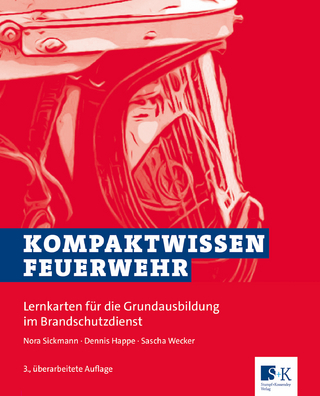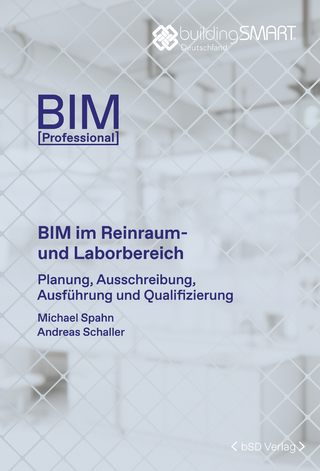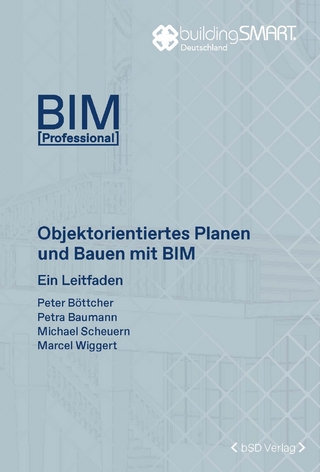
Encyclopedia of Wildfires and Wildland-Urban Interface (WUI) Fires
Springer International Publishing
978-3-319-52089-6 (ISBN)
This encyclopedia is an invaluable reference for newcomers to the field, as well as researchers, students, developers, and professionals who are interested in exploring this dynamic area.
General Sections include:
Combustion
Coordination System Locations
Fire Whirls
Firebrands and Embers
Incident Management Team (IMT) Support Locations
Incident Response Support Locations
On-the-Incident Locations
Soot and Effects on Wildland/WUI Fire Behavior
Weathering Effects on Fire Retardant Wood Treatments
Wildland Firefighting Locations
Wildland Fuel Treatments
Dr. Samuel L. Manzello is a Mechanical Engineer with the Fire Research Division of the National Institute of Standards and Technology (NIST). Prior to his appointment at NIST, he completed his PhD in Mechanical Engineering at the University of Illinois-Chicago in 2000. During his tenure at NIST, Dr. Manzello's research interests have been intentionally broad, and may be best described as bringing fundamental combustion knowledge to practical problems. His research in droplet-surface interaction was featured in the journal Nature. In addition to microgravity combustion, and droplet-surface interaction, he has led investigations on soot formation in a well-stirred reactor/plug flow reactor, the physics of fire-structure interaction, and most recently Wildland-Urban Interface (WUI) fires. Dr. Manzello has received many awards including a NASA Graduate Student Researcher Fellowship (NASA-GSRP), a National Research Council (NRC) Post-Doctoral Fellowship, a fellowship from the Japan Society for the Promotion of Science (JSPS), a NIST Individual Bronze Medal, NIST Engineering Laboratory (EL) Awards for best paper and Outstanding Communicator, the 2015 Harry C. Biggelstone Award, the 2016 Tibor Z. Harmathy Award from Springer Nature, and the 2016 Best Journal Paper Award from the Combustion Society of Japan. He has served as an invited Guest Editor for Fire Technology and Fire Safety Journal, is currently Associate Editor of Fire Technology, and is on the Editorial Advisory Board of the journal Fire and Materials.
lt;p>· Activity Fuels
· Airborne-Based Fire Detection
· Airtankers
· Aspect
· Atmospheric Turbulence· Automatic Surveillance Methods
· Backing Fire· Blow-up
· Building Codes and Standards for New Construction
· Burn Out and Backfire/Backfiring
· Burning Period
· Burning Rate
· Bushfires
· Canopy Fuel
· Canyons
· Chaparral
· Combustion
· Computational Evacuation Modeling in Wildfires
· Conduction
· Convection
· Coordination System Locations
· Cost of Suppression
· Costs of Mechanical Fuel Reduction Treatments
· Costs of WUI Codes and Standards for New Construction
· Coupled Fire-Atmosphere Interactions
· Creeping Fire
· Crown Fire
· Crown Scorch Height
· Decks, Porches, and Patios
· Defensive Actions and People Preparedness
· Diameter at Breast Height
· Direct Flame Contact
· Dry Thunderstorms
· Economics of WUI/Wildfire Prevention and Education
· Emergency Notification: Warnings and Alerts
· Emissions Measurements
· Entrapment
· Eruptive Fires
· Escape Routes
· Estimating Suppression Expenditures
· Evacuation
· Extinguishment Agents
· Fences and Accessory Structures
· Fire Acceleration
· Fire Adapted Community
· Fire and Bark Beetle Interactions
· Fire Complex
· Fire Data
· Fire Ecology
· Fire Effects on Soils and Hydrology
· Fire Emissions
· Fire Frequency
· Fire History
· Fire Intensity
· Fire Regime
· Fire Severity
· Fire Shelter
· Fire Whirls
· Firebrand Processes in Wildland Fires and Wildland-Urban Interface (WUI) Fires
· Firebrands and Embers
· Firebreak and Fuelbreak
· Fireline Intensity
· Fireline pack and Personal Gear/Travel Bag
· First- and Second-Order Fire Effects
· First-Order Fire Effects Model (FOFEM)
· Flame Dimensions
· Flanking Fire
· Flare up
· Fluid Mechanics
· Foehn Winds
· Forest Fire
· Fuel Continuity
· Fuel Loading
· Fuel Model
· Fuel Moisture
· Fuels Characterization Techniques
· Grass Curing/Cured Fuels
· Ground Fire
· Ground Fuel
· Ground-Based Fire Detection
· Haines Index
· Hand Tools, Chain Saw, Leaf Blower, and Backpack Pump
· Heading Fire
· Heat Release Rate
· Heat Transfer from Fires
· Historical Range and Variation (HRV)
· Hot Metal Particles
· Hotspot
· Humidity Measurements
· Ignition
· Ignition Devices
· Ignition Sources
· Ignition-Resistant Communities
· Imaging Postfire Environments
· Impacts of Wildfire on Children
· In Situ Diagnostics for Characterization of Mass and Energy Transport
· Incident Command System
· Incident commander
· Incident Management Team (IMT) Support Locations
· Incident Response Support Locations
· Indigenous Fire Stewardship
· Ladder Fuels
· LAI: Leaf Area Index
· Landscape Fire Ecology
· Lessons Learnt from Post-Fire Surveys and Investigations
· Masticated Fuels
· Mediterranean Forest Fuels
· Modeling Approaches
· Multi-fire Interaction (Fire Merging)
· National System Collecting Data on Fire
· Natural Fuels
· On-the-Incident Locations
· Operational Wildland Fire Behavior Models and Systems
· Ornamental Vegetation
· Physical Modelling of Wildland Fires
· Post-fire Tree Mortality
· Pre-fire and Post-fire Data Studies in the WUI
· Prescribed Burning
· Pyrolysis
· Radiant Heat
· Reburn
· Remote Sensing of Fire Behavior
· Resource Management Plan
· Roofing, Gutters and Eaves
· Safety Zone
· Satellite-Based Fire Detection
· Scaling
· Sidings, Windows, and Glazing
· Situational Awareness
· Slop Over
· Slope and Terrain
· Slope Winds
· Smoke Exposure
· Smoke Transport
· Smoldering Combustion
· Soot and Effects on Wildland/WUI Fire Behavior
· Spotting/Spot Fire
· Standard Firefighting Orders
· Stay and Defend
· Structure Firebrand Attack
· Surface Area-to-Volume Ratio
· Surface Fire
· Surface Fuels
· Surface to Crown Transition
· Temperature
· Thermal Radiation
· Torching
· Underburn
· Unmanned Aircraft System (UAS)
· Urban and Land Use Planning
· Validation of Wildfire Spread Models
· Vegetative Firebrand Attack
· Vents
· Watch Out Situations
· Weathering Effects on Fire Retardant Wood Treatments
· Wetting Agents and Foams
· Wildfires and WUI Fire Fatalities
· Wildland Fire
· Wildland Fire Fighting Protective Garments
· Wildland Fire Rate of Spread
· Wildland Fire Use
· Wildland Firefighter Physiological Job Demands
· Wildland Firefighting Chemicals
· Wildland Firefighting Locations
· Wildland Firefighting Personnel
· Wildland Fuel Dynamics
· Wildland Fuel Treatments
· Wildland-Urban Interface
· Wind
· Work Capacity Test
· WUI Risk Assessment at the Landscape Level
| Erscheint lt. Verlag | 1.7.2020 |
|---|---|
| Reihe/Serie | Encyclopedia of Wildfires and Wildland-Urban Interface (WUI) Fires |
| Zusatzinfo | XXV, 1195 p. 456 illus., 385 illus. in color. In 2 volumes, not available separately. |
| Verlagsort | Cham |
| Sprache | englisch |
| Maße | 178 x 254 mm |
| Gewicht | 3149 g |
| Themenwelt | Technik ► Bauwesen |
| Schlagworte | Fire behavior • Firebrands • Firefighting tactics • Fire Safety Science • forestry management • Remote Sensing • Wildfire • Wildland fire • Wildland fire exposures • Wildland-Urban interface fires • WUI fire exposures |
| ISBN-10 | 3-319-52089-X / 331952089X |
| ISBN-13 | 978-3-319-52089-6 / 9783319520896 |
| Zustand | Neuware |
| Haben Sie eine Frage zum Produkt? |
aus dem Bereich


